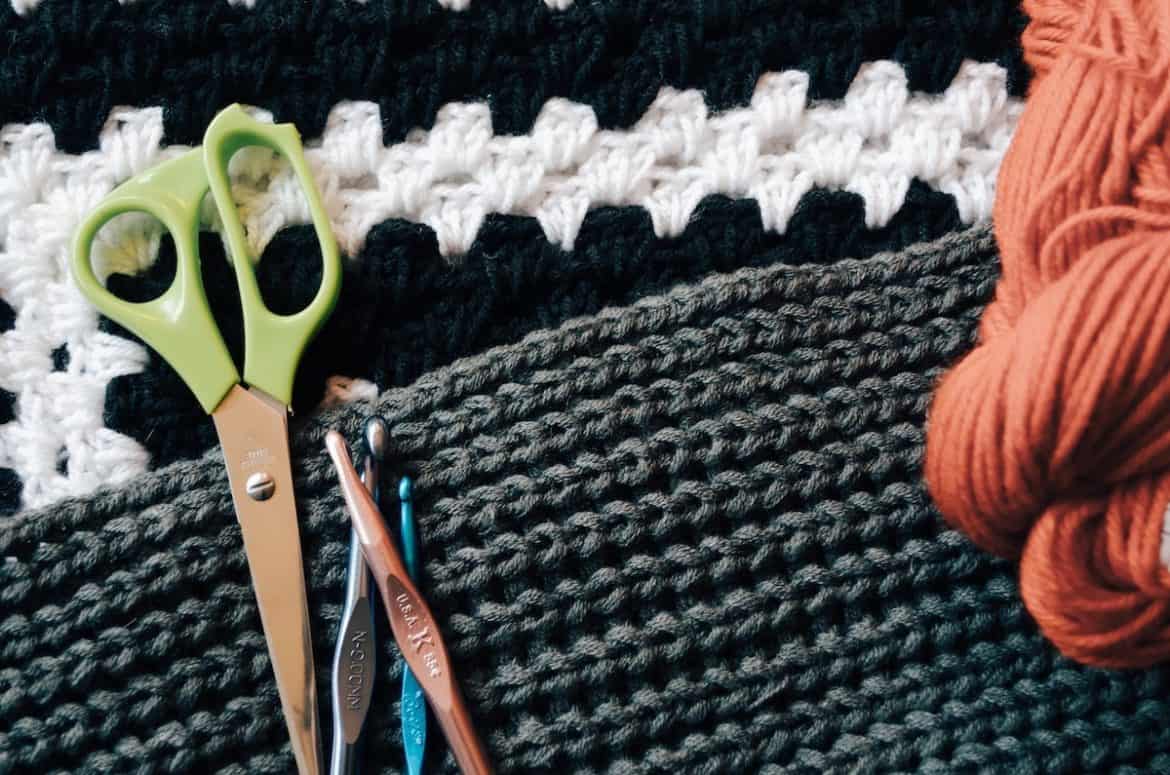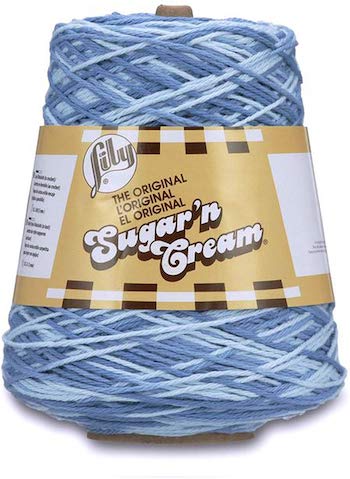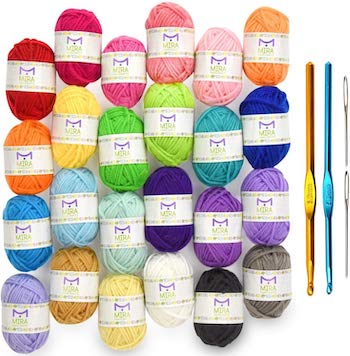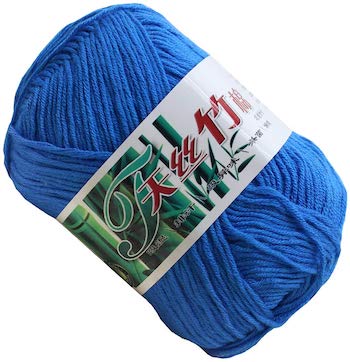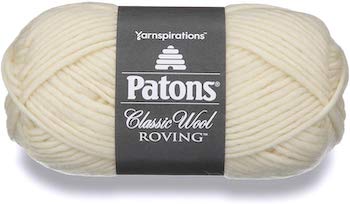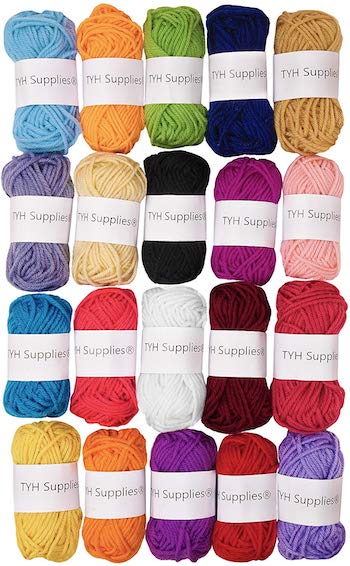When it comes to choosing the right yarn for your latest crochet project, you want to make sure you make the right choice.
You wouldn’t want to use certain materials if they can’t hold up to the requirements of the desired craft.
With that in mind, what are the best yarns for placemats? The top 5 that make for a placemat that stands the test of time are cotton, acrylic, bamboo, wool, and plarn.
Now that you know our favorite picks for the placemat, we can start to explore the factors to bear in mind when selecting your yarn.
5 Best Yarns for Crochet Placemat
One of the main things you should be looking for in a yarn is heat-resistance so that you can set your hot plate on it without worrying about burning it. Water-absorption is also important, bearing in mind the inevitability of a spill here and there.
So let’s take a closer look at the 5 types of yarn we have selected for the job, and assess what other properties make them the best options for a crocheted placemat. Plus, we’ll also discuss the aesthetic appeal of each material, and the tactile qualities, to really help you narrow down the options.
1. Cotton
Unsurprisingly, cotton trumps many other types of yarn when it comes to crochet placemats.
First, we’re going to highlight the main properties (both good and bad) of each yarn that are relevant for making a placemat, then we’ll delve deeper and cover each point in detail.
- Heat-resistant
- Good water-absorption
- Durable
- Easy to wash
- Can take a while to dry
Heat-resistant – Why is it important that the material you opt for is heat-resistant? Well, aside from the obvious, being the ruin of your latest crochet craft, you could stain the table or worse.
While some other yarns would potentially melt under the heat of a hot dish straight from the oven, cotton – providing it’s of good quality – will stand up to heat.
The main purpose of a placemat is to prevent damage to a wooden table by providing a surface to place a piping hot oven dish.
For that reason alone, you want to be 100% sure that if you’re going to bring that hot casserole dish to the table immediately after it has finished cooking, that your placemat will be up for the job and won’t wilt under the heat.
Good water-absorption – Due to the molecular makeup of cotton, it’s incredibly effective at absorbing water. I’ll spare you the scientific explanation, but for the same reason we prefer cotton clothes in summer to keep us cool, cotton yarn is a solid option for a placemat.
So what that means for your placemat is less risk of staining the table with coffee rings or other liquid spills.
Durable – One of the best properties of cotton is its durability, and ability to maintain its structure and form through plenty of wear and tear.
The composition of cotton means that even if you get your placemat wet, it still won’t be very susceptible to ripping or tearing.
Easy to wash – It’s true that cotton is easy to wash, so you shouldn’t be afraid to chuck it in the washing machine after an extended period of use.
However, if you are using 100% cotton, make sure you wash with cold to warm water in order to prevent shrinkage, and then dry them out by hanging them up so they best retain their form.
Can take a while to dry – The fact that cotton is great at absorbing liquid is both a positive and a negative. The material can be slow to dry, meaning if you leave it wet for too long, you might start to see the signs of mildew show on the placemat.
One last notable thing to mention about using this material yarn for a crocheted placemat, is using 100% cotton vs a blend with say, acrylic.
100% cotton can be more prone to fading and shrinking than a blend, but provides a soft texture and pleasing on the eye aesthetic.
Contrasted with a cotton blend with acrylic, which essentially can give you the best of both worlds, providing durability and a clean look.
My favorite cotton yarn is this one.
2. Acrylic
- Stain-resistant
- Machine-washable
- ‘Cheap’ look
- Coarse material
Stain-resistant – The sole purpose of a placemat, other than to compliment the aesthetic of the table if that’s what you are going for, is to provide a buffer between the table and the food on top of it.
As such, it’s crucial that it be resistant to stains, in order to preserve that pristine wooden finish.
The makeup of acrylic yarn lends itself well to soaking up liquid and preventing anything from seeping through to reach whatever is underneath.
Machine-washable – Like cotton, acrylic can be washed in the washing machine. However, unlike 100% cotton, acrylic is less prone to shrinking and fading, which means you don’t have to worry so much about ruining the product by putting it in the wash.
‘Cheap’ look – Acrylic is certainly one of the more affordable options when considering yarn for a crochet placemat, yet at what other cost?
For one, the end product might not be as pretty as one made from cotton. Which makes acrylic a less suitable option if you’re looking to make someone an extra special gift for the home.
Also, acrylic can be flammable, meaning while you’re fine to put hot things on it, you will have to be careful not to exceed its tolerance for heat with a dish straight from the oven for example.
Coarse material – In contrast with the soft, delicate characteristic of pure cotton, acrylic has a slightly more coarse, rough element to it.
This coarseness is in part what makes acrylic a robust option, and one that will last a good while.
On the other hand though, this can contribute to a less pleasing on the eye appearance, and also make it less pleasing to handle.
My favorite acrylic yarn is this one.
3. Bamboo
Most bamboo yarns are actually a blend of up to 70% bamboo and 30% another material. My favorite is a bamboo/cotton blend.
- Incredibly strong
- Great water-absorption
- Eco-friendly
Incredibly strong – Bamboo fiber has an incredibly balanced composition which makes it not only soft to the touch and lightweight, but also incredibly strong and durable.
This means, among other things, that it can stand up to a fair amount of abuse.
On top of that, the nature of bamboo fiber means that it stays relatively odour-free, so you don’t have to worry about having a placemat that smells like last night’s spaghetti bolognese.
Great water-absorption – Beating out all the other options in the water-absorption stakes, bamboo fiber can deal with water easily.
As a result, you won’t need to worry about staining it with liquid spillages, or spoiling it because of messy eating at the dinner table.
Eco-friendly – While one major downside of bamboo is the cost, being the most expensive option, it more than makes up for that by being eco-friendly.
Unlike acrylic which is manmade, bamboo comes straight from the earth. Contrary to popular belief, bamboo is a grass and not wood. As a result its qualities are perfectly balanced, and it makes for a great material when attempting a crochet.
My favorite bamboo yarn is this one.
4. Wool
- Natural
- High water-absorption
- Affected by heat
Natural – Wool fiber’s best quality is its renewable nature. Coming from sheep, the fleece regrows yearly, so you would be investing in a sustainable option.
As a byproduct of being natural, wool feels great to the touch, and can provide a cozy warmth to a room, especially on a cold rainy day.
High water-absorption – We’ve already touched upon the importance of a placemat being able to absorb water, and wool ranks up there with the best.
A thick material, wool fiber will give you no cause for concern when it comes to spills and stains, making it a great option.
Affected by heat – Unfortunately, if wool fiber is exposed to higher temperatures, it can start to lose its form and bend out of shape.
This can become a problem if you plan on using the placemat for hotter dishes, since it can lose its visual appeal, and perhaps even start to deteriorate with continued use.
My favorite wool yarn is this one.
5. Plarn
- Waterproof
- Robust
- Affected by heat
- Unsustainable
Waterproof – Of course, being a plastic-based yarn (made from re-using plastic bags), plarn as a material is waterproof. This is great as it means the placemat isn’t likely to be ruined by water damage.
However, on the flip side, water could pool on the top and cause some frustration, so bear that in mind if you’re likely to spill lots of liquids on the placemat.
Robust – The composition of plarn means that it will last a long time, and you won’t have to worry about replacing it or making a new one any time soon.
Affected by heat – A fairly significant downside to plarn is, like wool, it can be affected by exposure to heat.
If the placemat is made too thin, there is a risk that it could melt when faced with high temperatures, which is definitely something to consider.
Unsustainable – The sustainability of plarn is can be a slightly contentious issue. Since you are re-using old plastic bags, you are preventing more plastic being thrown out and damaging the environment.
On the other hand, the plastic is probably eventually going to be thrown out anyway, so you could argue that it just delays the process, and is still essentially bad for the environment.
Another version of plarn is simply acrylic yarn. I really like this one.
Related Questions
So now that we’ve covered the best yarn options for a placemat, why not quickly go over some of the best materials you can use for other home essentials like the coaster and dishcloth?
What are the best yarns for crochet coasters?
The number one quality you should look for in a crochet coaster is, of course, stain-resistance. Those pesky coffee rings can really sink into your nice wooden table if you don’t use the right coaster. So let’s check out the best options!
Cotton – Again, cotton rises to the top of the pile as it’s the most popular option for coasters as well as placemats. For a start, there is no risk that a cotton-made coaster will melt, which is a big deal.
Then, you can expect an easy-to-clean coaster if you opt for cotton and one which will prove stubborn when it comes to stains and liquid spills.
Wool – Wool, like cotton, isn’t susceptible to melting, a hugely important attribute when considering a material to place your steaming hot mug of coffee on top of.
Wool also captures that warm, cozy feeling that a warm cup of tea or coffee can on a dreary day, so that’s a big plus.
Be careful with wool coasters though, as you’ll need to hand wash them to make sure they don’t lose shape and color.
Silk – Interestingly enough, most people don’t consider using silk for crochet designs due to the high cost.
However, it makes a surprisingly good choice for a coaster due to it’s clean look and self-extinguishing nature, meaning if it ever catches fire it will burn out without setting the whole room on fire.
What are the best yarns for crochet dishcloths?
Dishcloths are an often-used item in the kitchen, and need to be able to spend a lot of time wet and maintain their composition.
With that in mind, let’s dive into the 3 best yarns for crochet dishcloths.
Cotton – As if you weren’t already aware, cotton is king when it comes to most things crochet.
Due to its high durability and ability to soak up water like it’s nothing, cotton is hands down the best option for making a kitchen dishcloth.
Linen – Linen is a solid alternative to cotton, providing similar benefits, and as such making a great dishcloth material.
Linen is a strong fiber and you can rely on a linen dishcloth to last a long time, which is extremely practical and probably what most people value most in a dishcloth at the end of the day.
Bamboo – If you want to splash out the cash for a more bespoke dishcloth to use in the kitchen, then bamboo should be the yarn you go for.
While cost might put many people off, bamboo is both eco-friendly, and incredibly water-absorbent as we established earlier.
